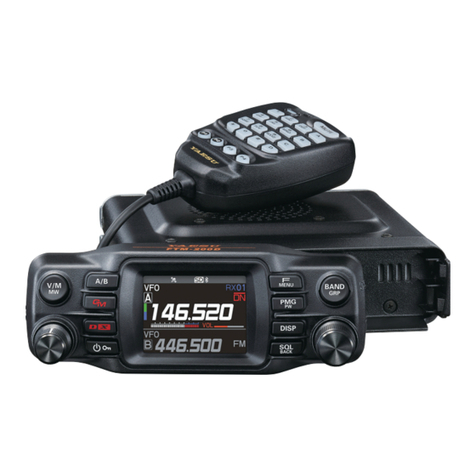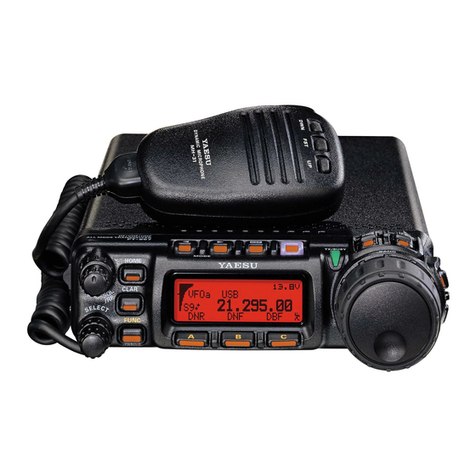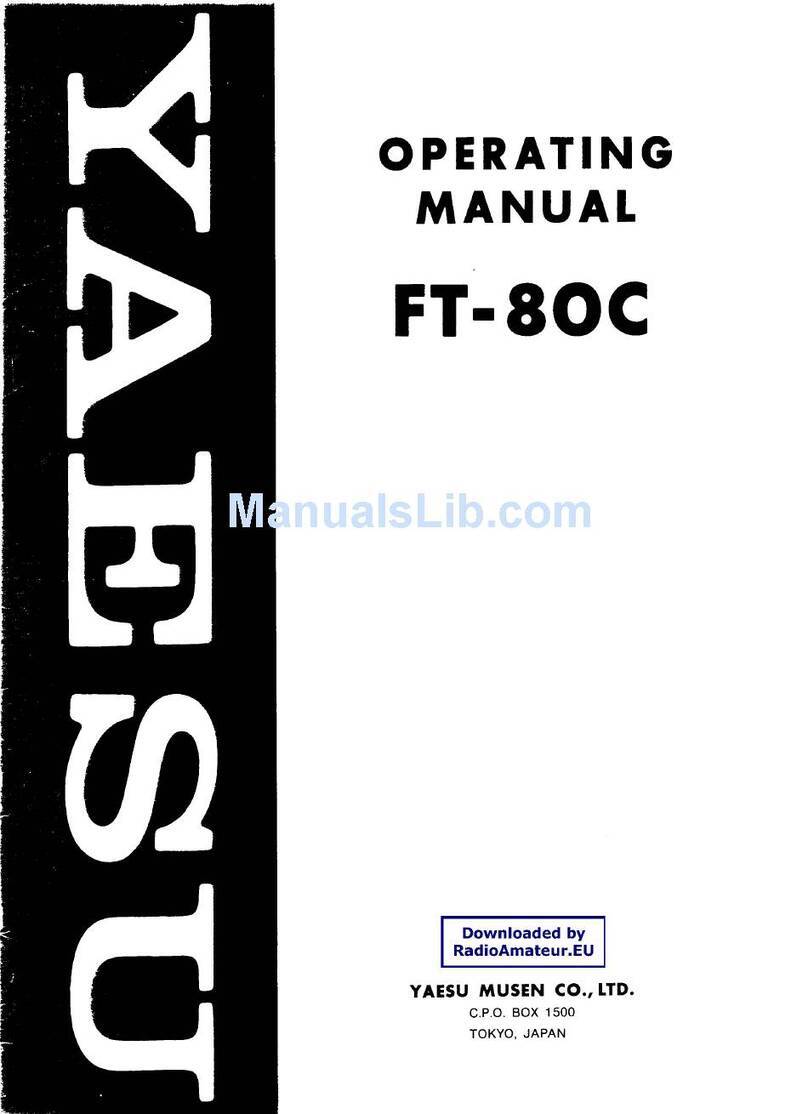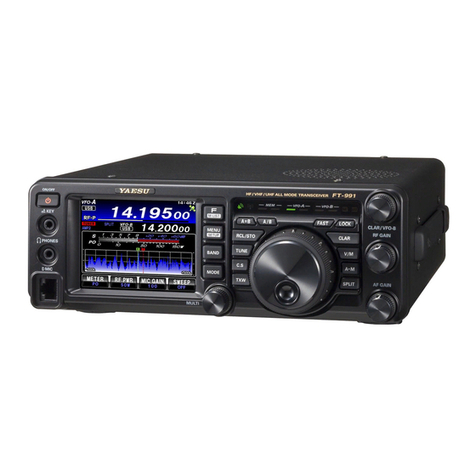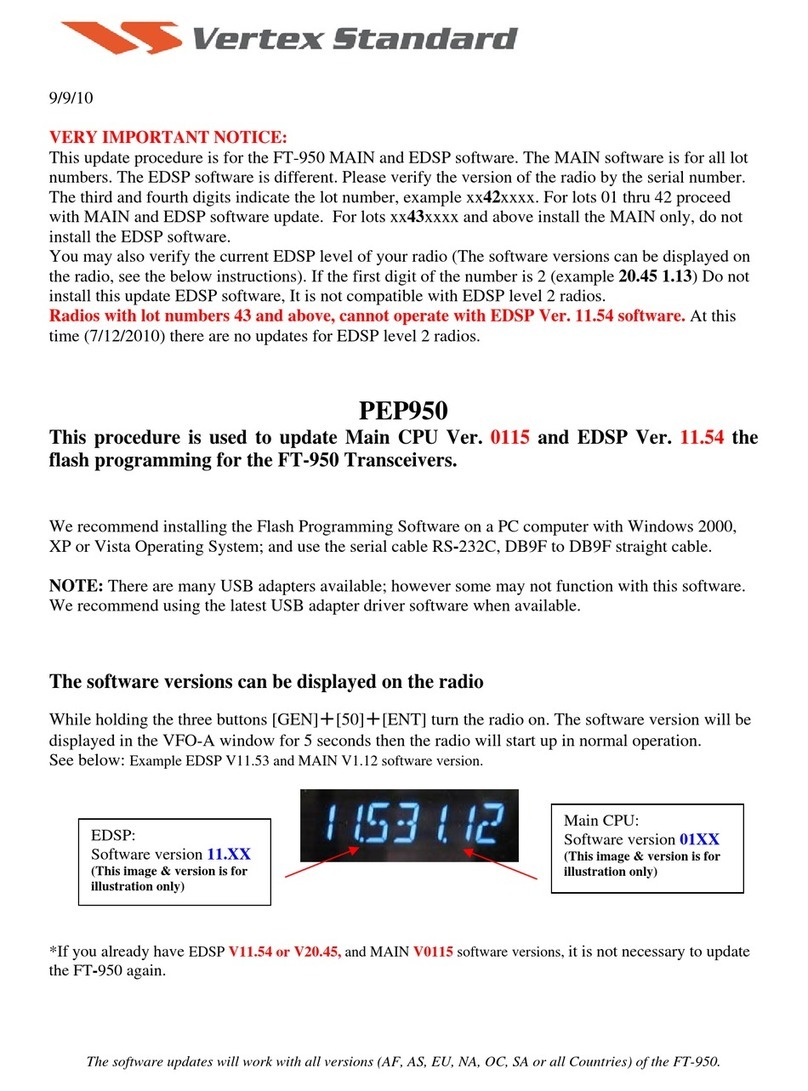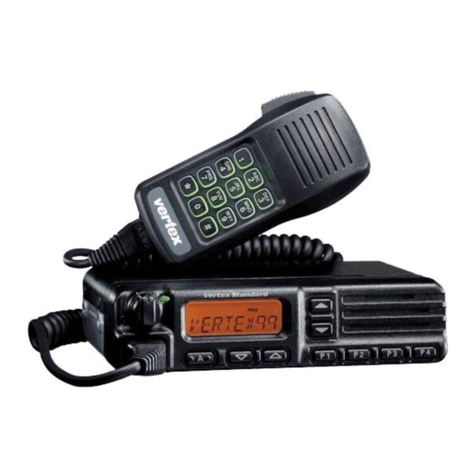Page 2 FT DX 9000MP OPERATION MANUAL
TT
TT
TABLEABLE
ABLEABLE
ABLE
OFOF
OFOF
OF CC
CC
CONTENTSONTENTS
ONTENTSONTENTS
ONTENTS
General Description ........................................... 1
About This Manual. . . ............................................................. 1
Conventions Used in This Manual .......................................... 1
Before You Begin. . . ........................................... 4
1. Connecting AC Power ........................................................ 4
2. Configuring Your FT DX 9000 Using the Menu ............... 4
3. Connecting and Selecting the Microphone ........................ 5
4. Extending the Front Feet .................................................... 5
5. Adjusting the Main Dial Torque ......................................... 6
6. Restarting Power after a Voltage Fluctuation ..................... 6
7. Resetting the Microprocessor ............................................. 7
Resetting Memories (Only) ............................................... 7
Menu Resetting ................................................................. 7
Full Reset .......................................................................... 7
Features .............................................................. 8
Accessories ...................................................... 10
Options .............................................................. 11
Installation and Interconnections .................... 12
Antenna Considerations ........................................................ 12
About Coaxial Cable ............................................................. 12
Grounding .............................................................................. 13
Antenna and FPS-9000H Power Supply Connections .......... 14
Connection of Microphone, Headphones,
and FH-2 Remote Control Keypad ............... 15
Key, Keyer, and Computer-Driven Keying Interconnections .. 16
Connecting a GPS Receiver .................................................. 16
VL-1000 Linear Amplifier Interconnections ......................... 17
Interfacing to Other Linear Amplifiers .................................. 18
Plug/Connector Pinout Diagrams ................... 19
Front Panel Controls ........................................ 20
Rear Panel ......................................................... 36
Frequency Display ............................................ 39
FPS-9000H Front Panel Controls .................... 40
FPS-9000H Rear Panel ..................................... 41
FH-2 Operation ................................................. 42
Basic Operation:
Receiving on Amateur Bands .......................... 43
Operation ............................................................................... 43
Operation on 60-Meter (5 MHz) Band (U.S. version only) .. 46
CLAR (Clarifier) Operation on Main (VFO-A) .................... 47
LOCK .................................................................................... 48
DIM ....................................................................................... 49
B-DISP OFF .......................................................................... 50
Convenient Features ........................................ 51
Dual Receive ......................................................................... 51
Dual Receive: Full Duplex Operation ................................... 52
P.BACK (Audio Playback) from Main (VFO-A) Receiver ... 55
“My Bands” Operation .......................................................... 56
Band Stack Operation ............................................................ 57
C.S (Custom Switch) ............................................................. 58
Dial Swap Configuration (AF/RF GAIN controls) ............... 59
Data Management Feature ..................................................... 60
More Frequency Navigation Techniques ............................... 61
Antenna Selection .................................................................. 62
Changing the Speaker Output Configuration ........................ 63
Receiver Operation (Front End Block Diagram)................... 64
IPO (Intercept Point Optimization) ....................................... 65
ATT ........................................................................................ 66
RF Gain (SSB/CW/AM Modes) ............................................ 67
Advanced Interference-
Suppression Features ...................................... 68
Using the VRF (Variable RF Front-end Filter) ..................... 68
Interference Rejection ...................................... 69
R.FLT (Roofing Filters) ......................................................... 69
CONT (Contour) Control Operation ..................................... 70
IF SHIFT Operation (
SSB/CW/RTTY/PKT/AM Modes
) ..................... 72
WIDTH (
IF DSP Bandwidth
) Tuning (
SSB/CW/RTTY/PKT Modes
) ......... 73
Using IF Shift and Width Together ................................. 74
IF Notch Filter Operation (
SSB/CW/RTTY/PKT/AM Modes
) ............. 75
Digital Noise Reduction (DNR) Operation ........................... 76
NARROW (NAR) One-Touch IF Filter Selection ................ 77
Digital Notch Filter (DNF) Operation ................................... 78
IF Noise Blanke (NB) Operation........................................... 79
Tools for Comfortable and
Effective Reception .......................................... 80
AGC (Automatic Gain Control) ............................................ 80
SLOPED AGC Operation ............................................... 81
Mute Feature (Main (VFO-A) Band) .................................... 82
Audio Limiter (AFL) Feature ................................................ 83
Adjacent Channel Monitor (ACM) (CW Mode Only) .......... 84
Audio Filter Operation .......................................................... 85


